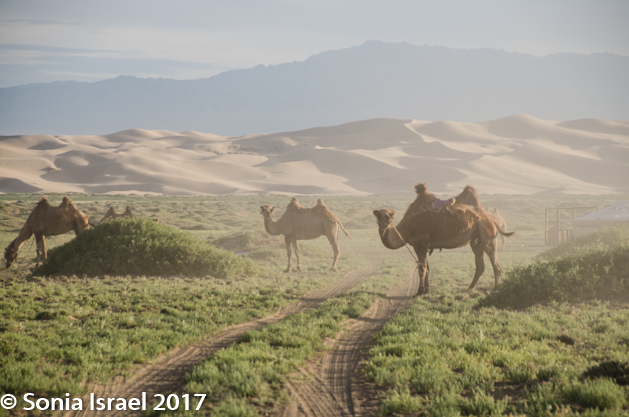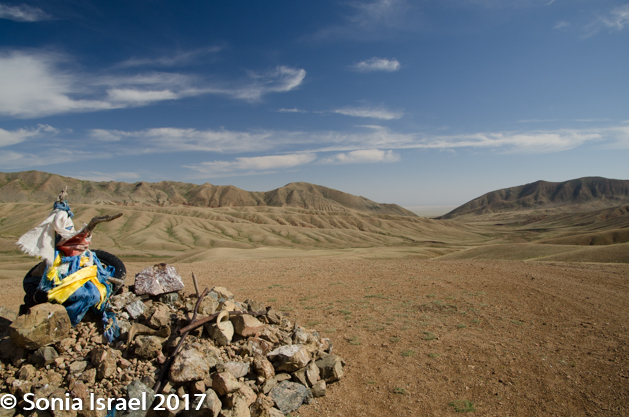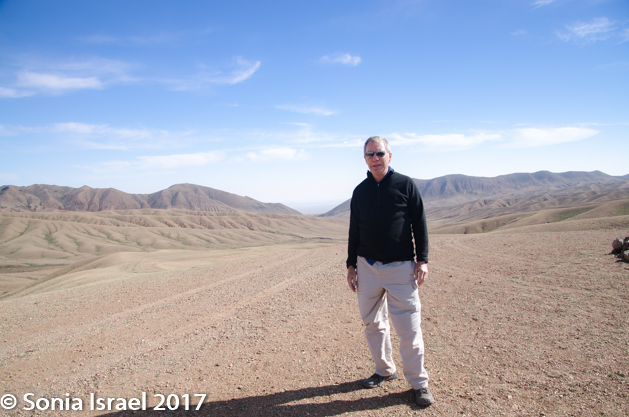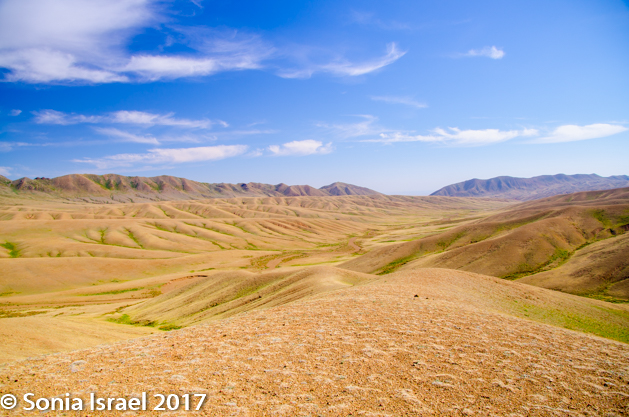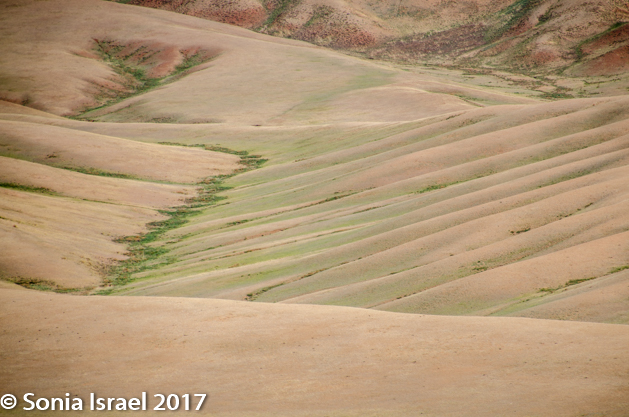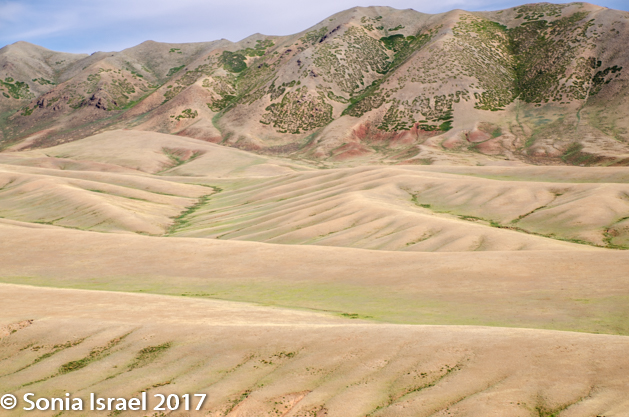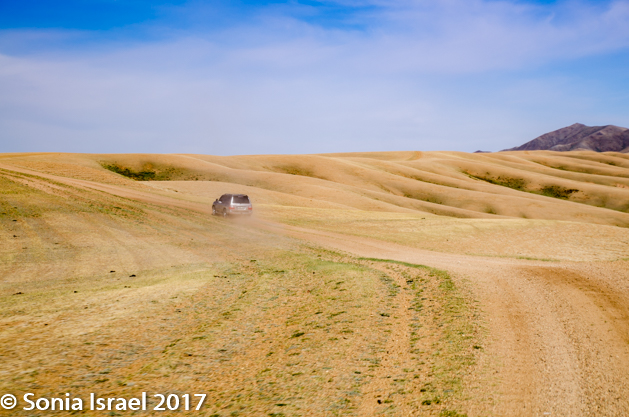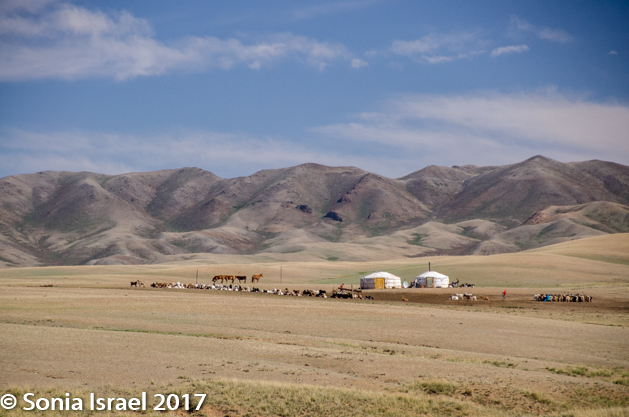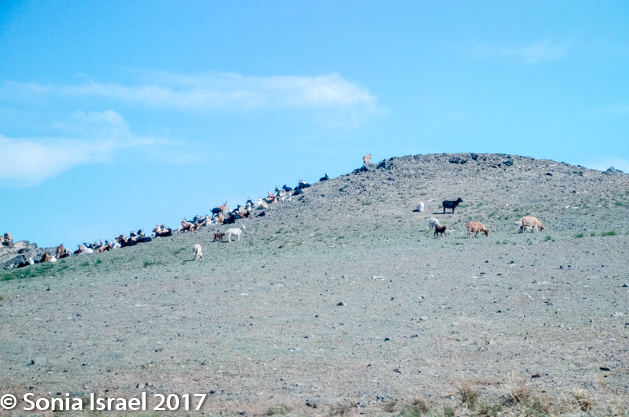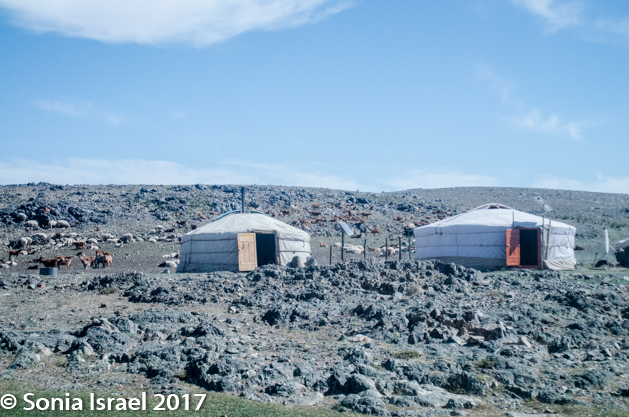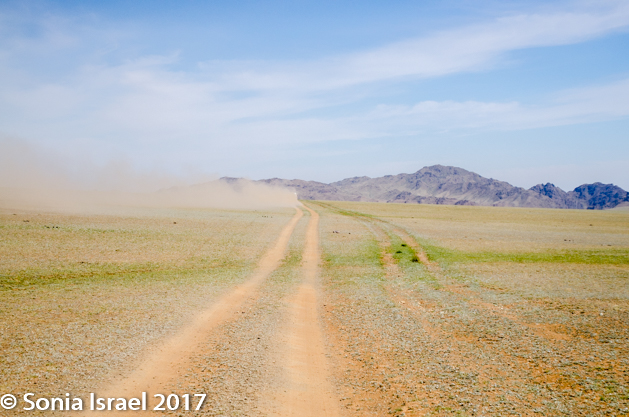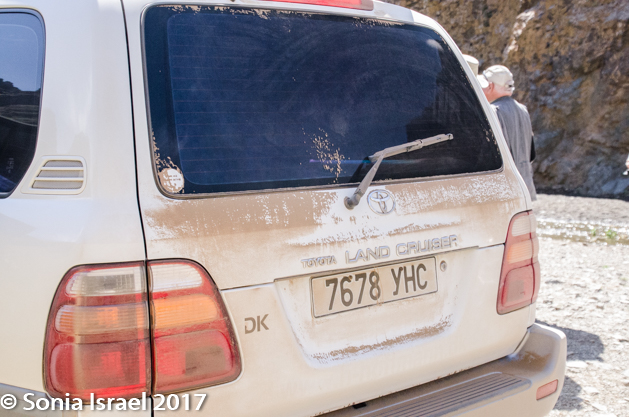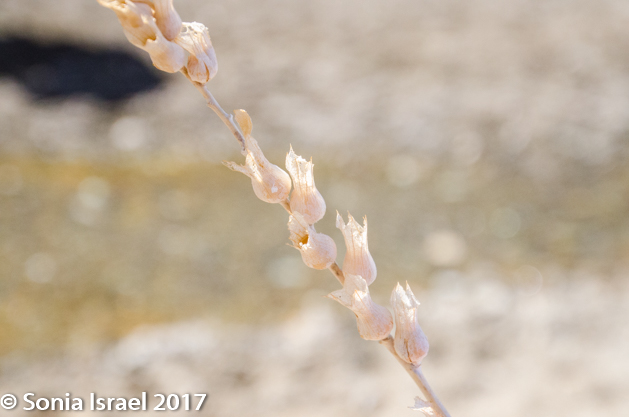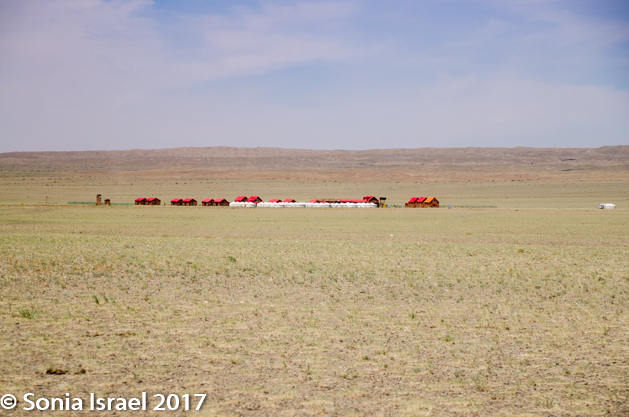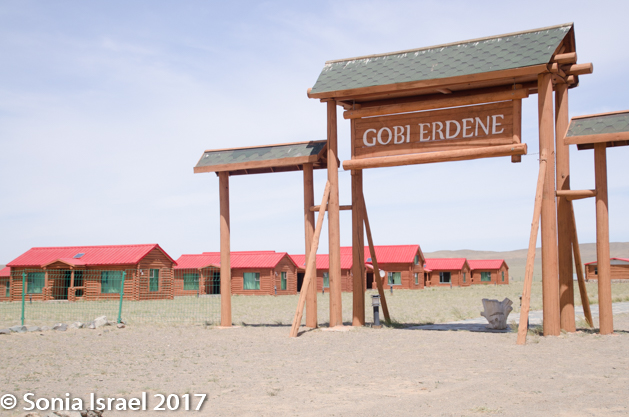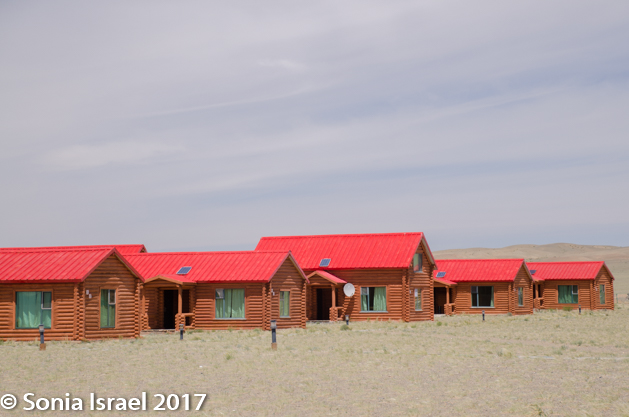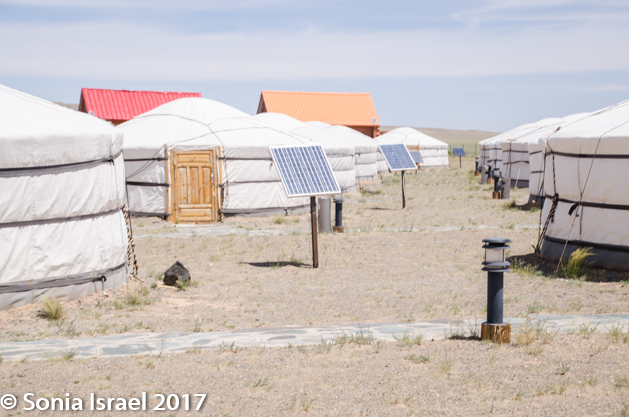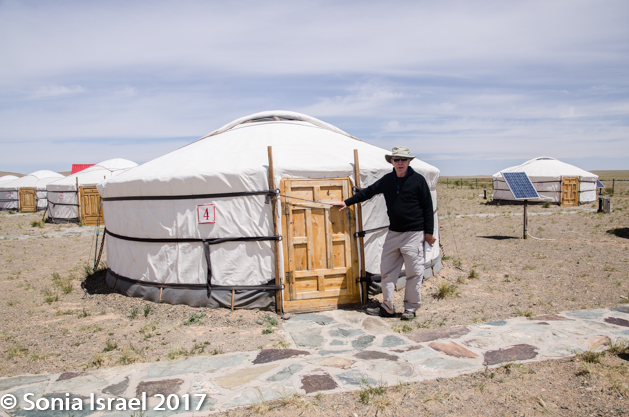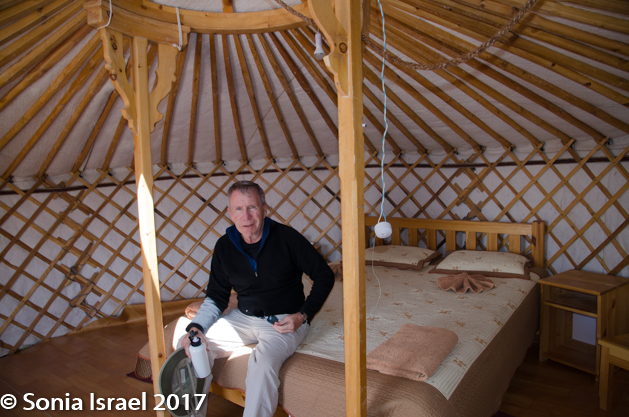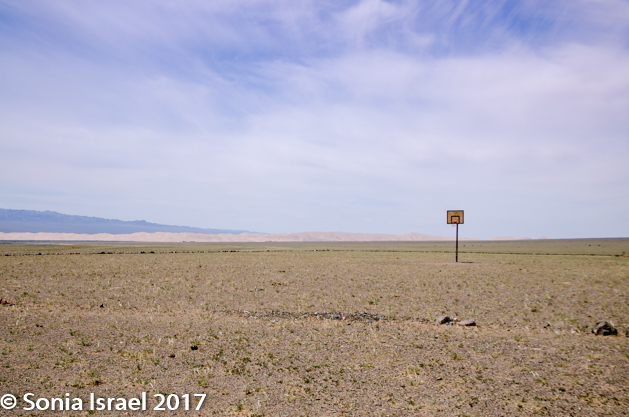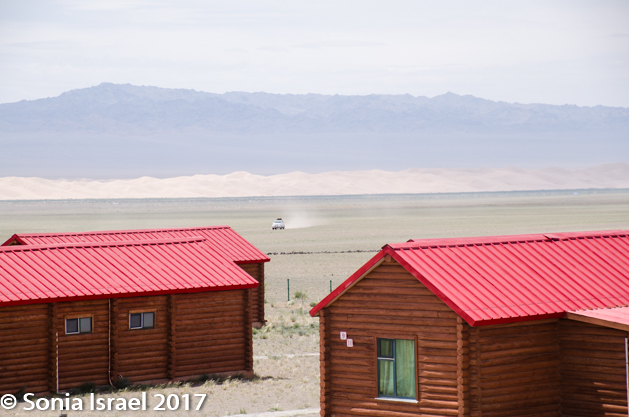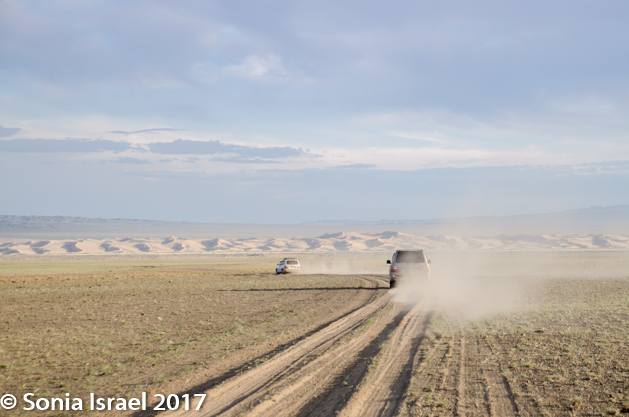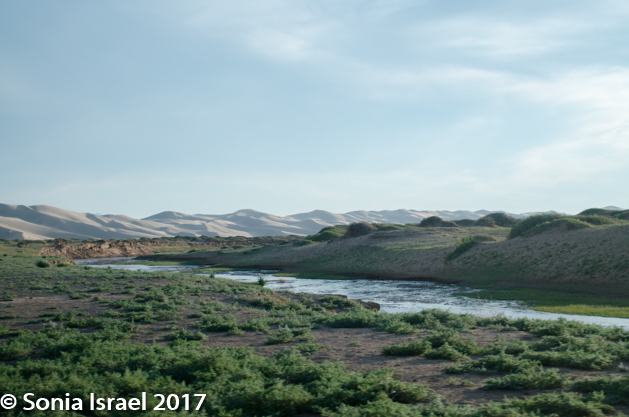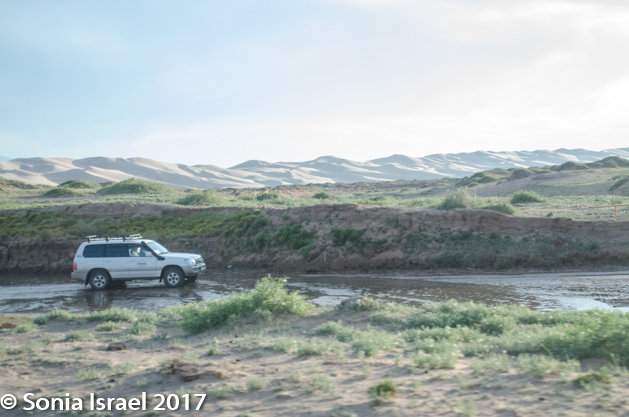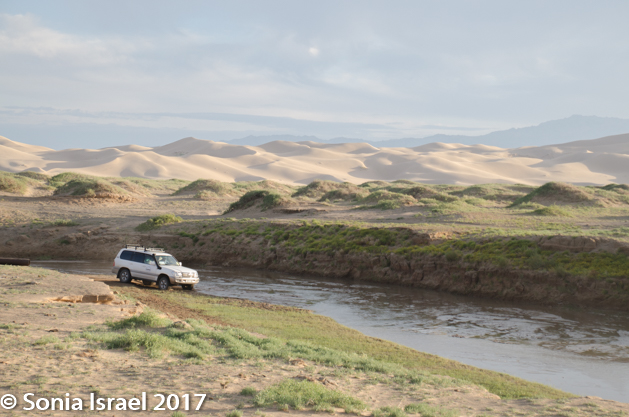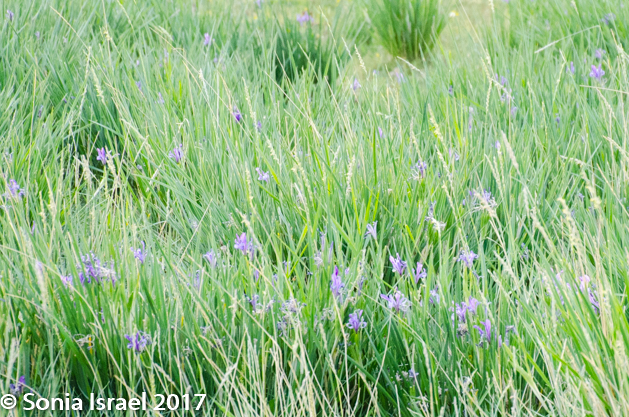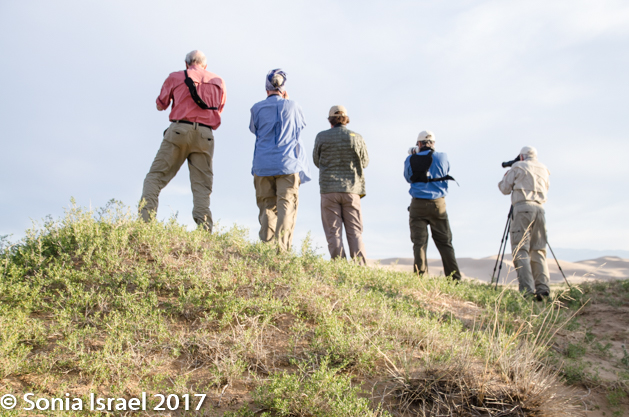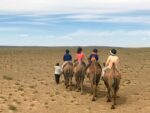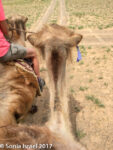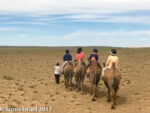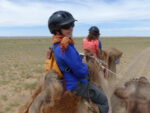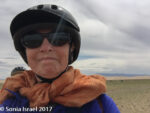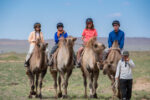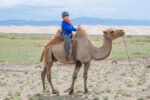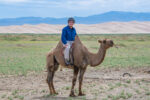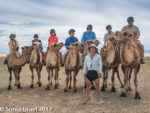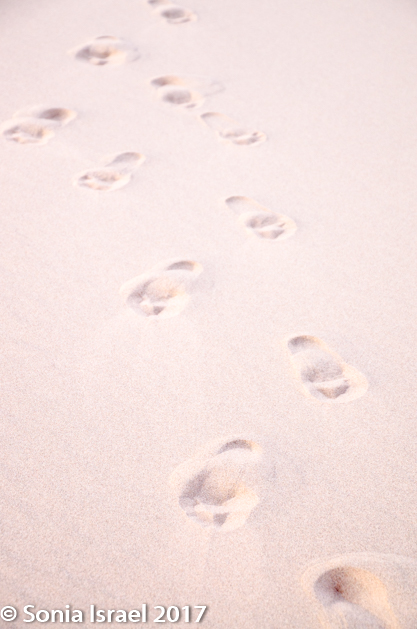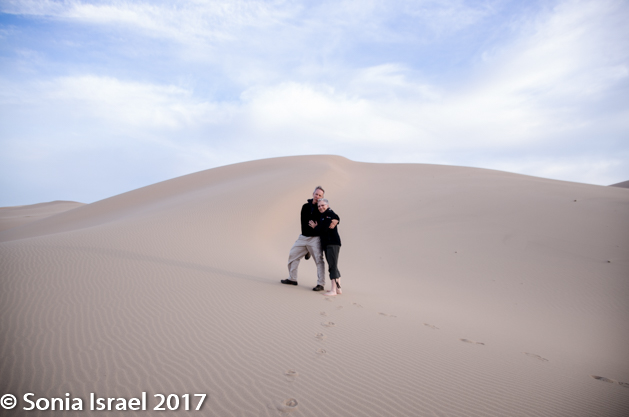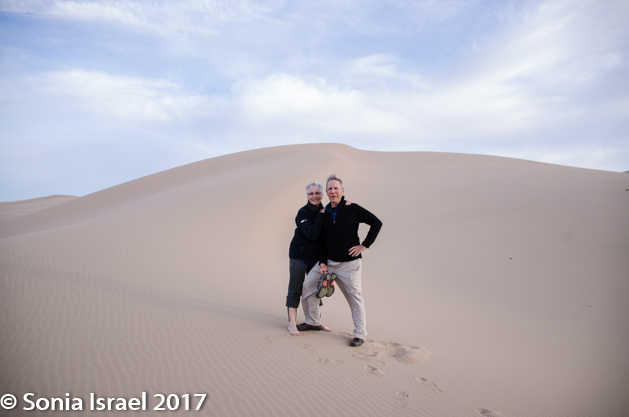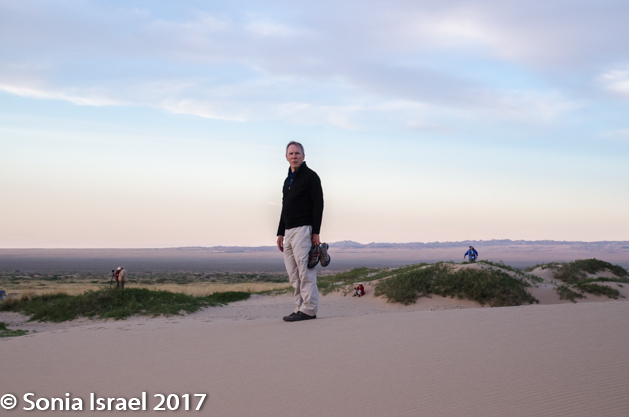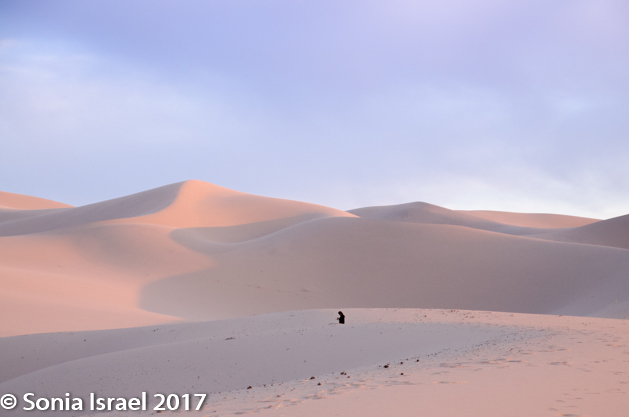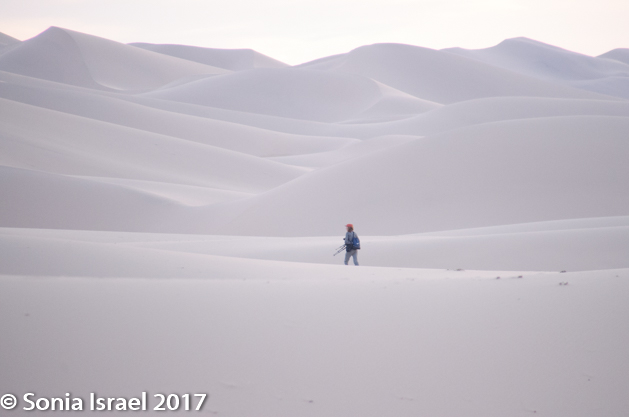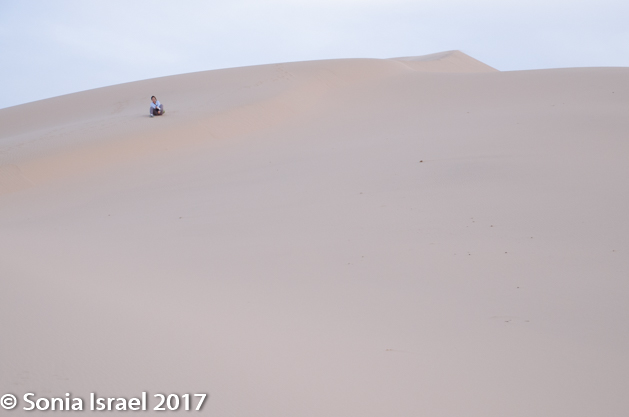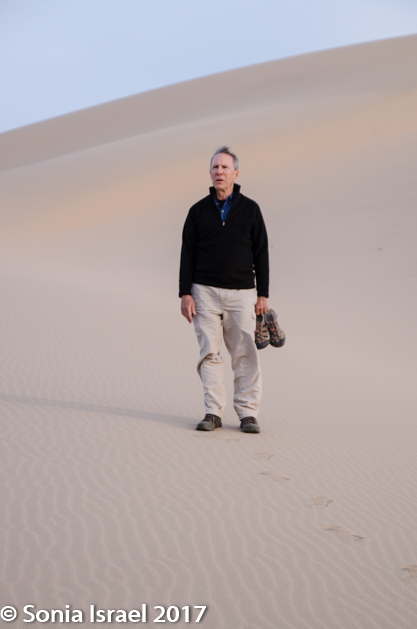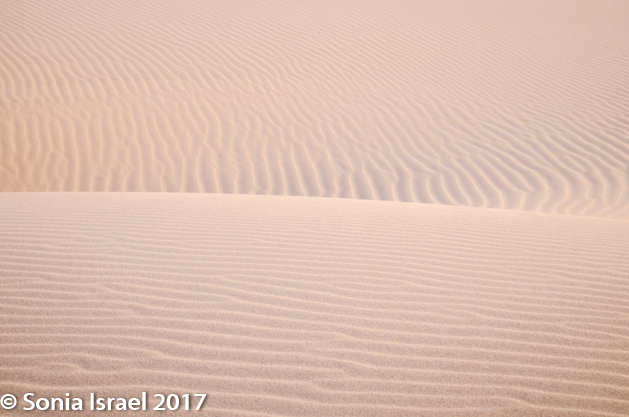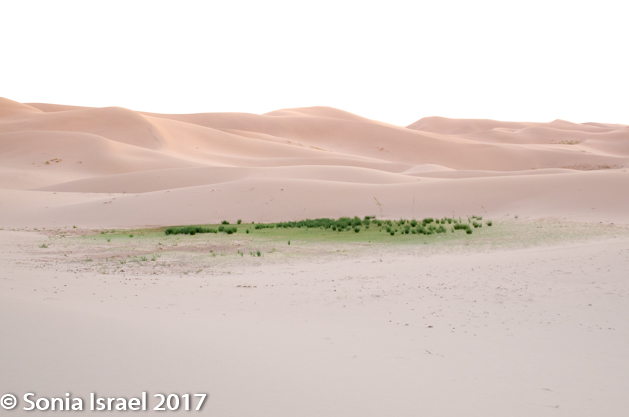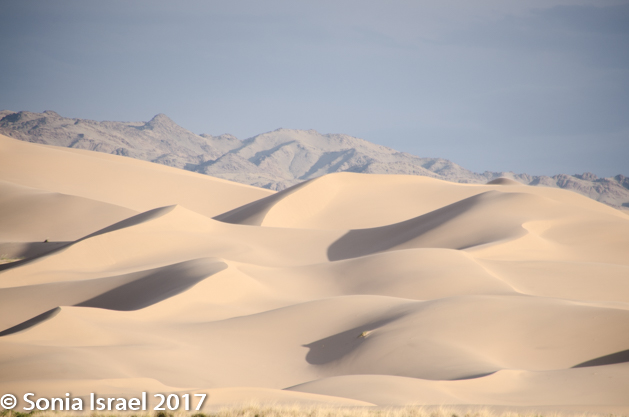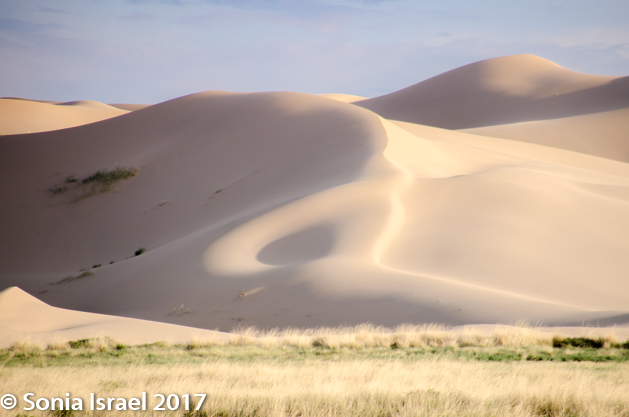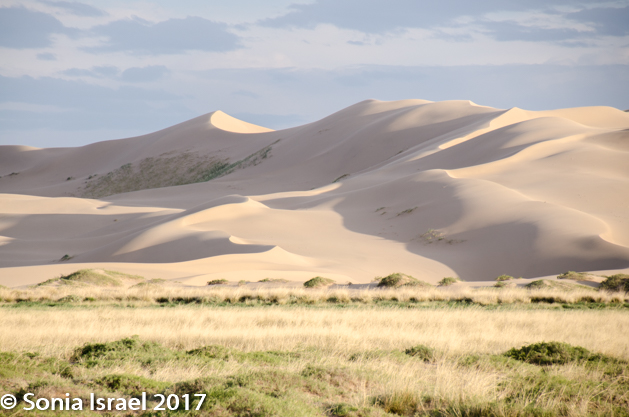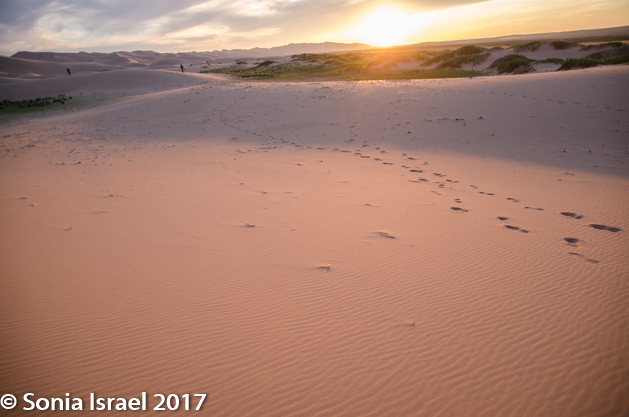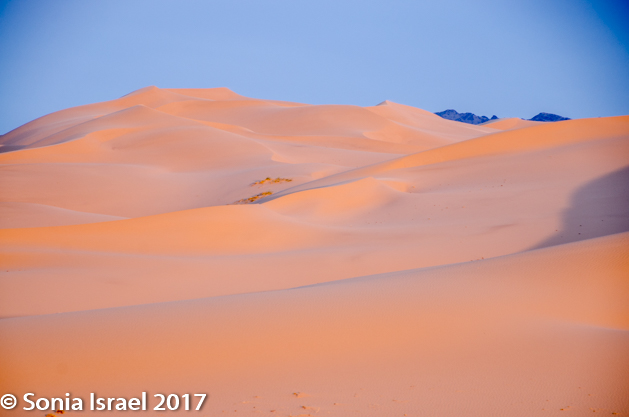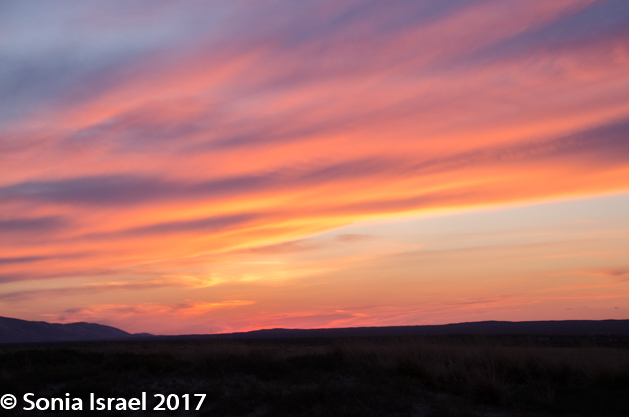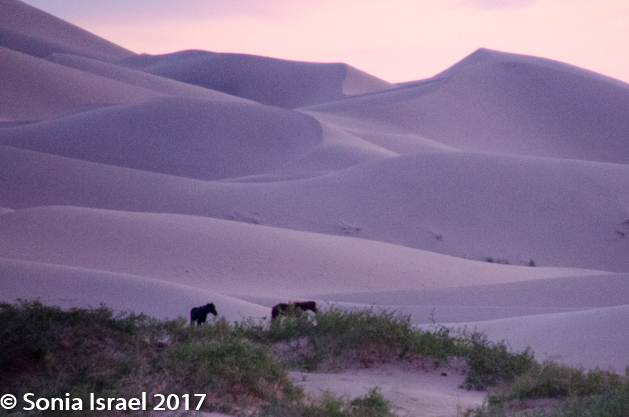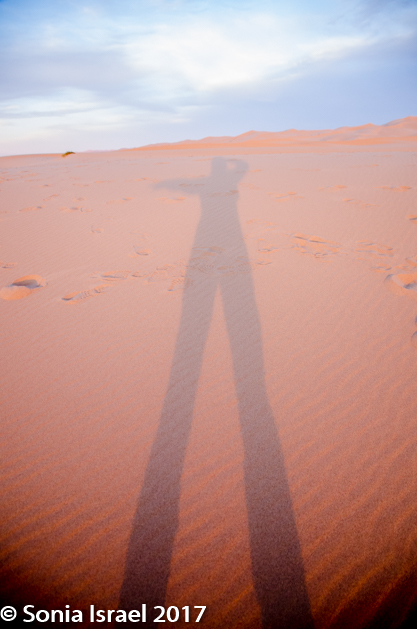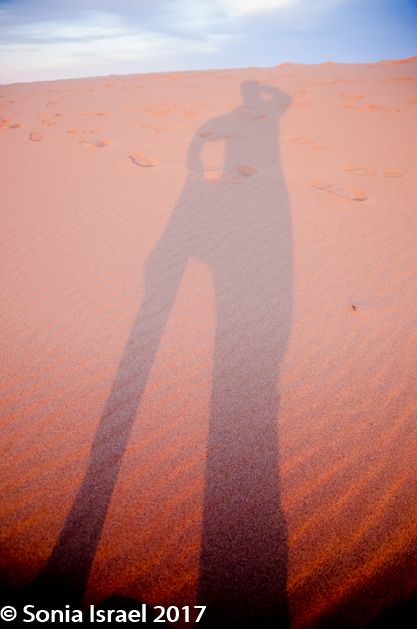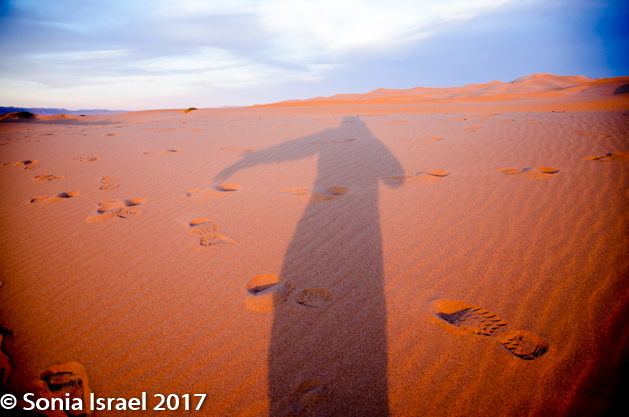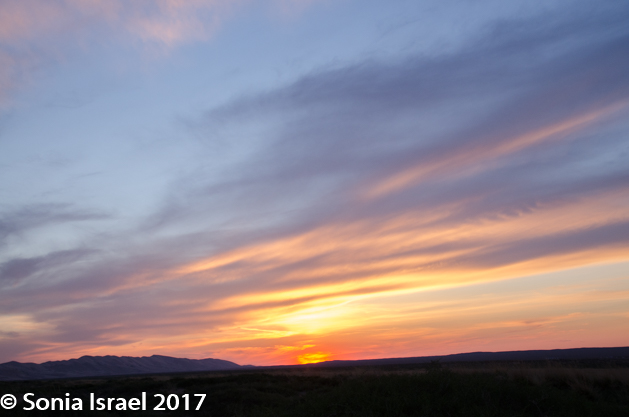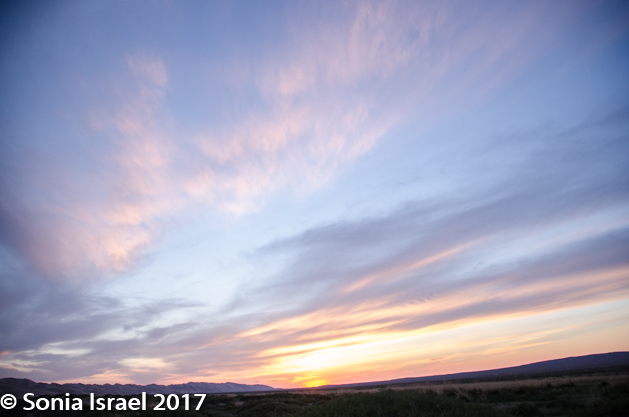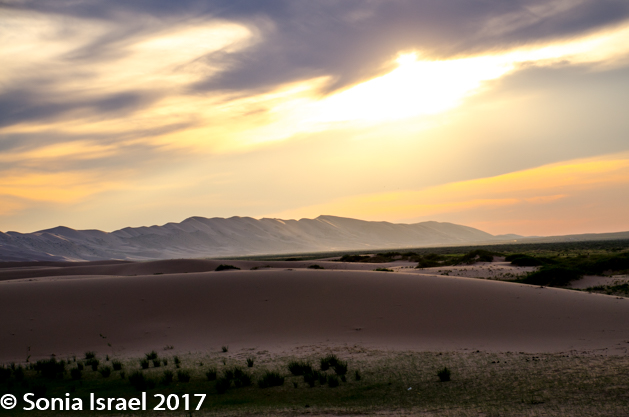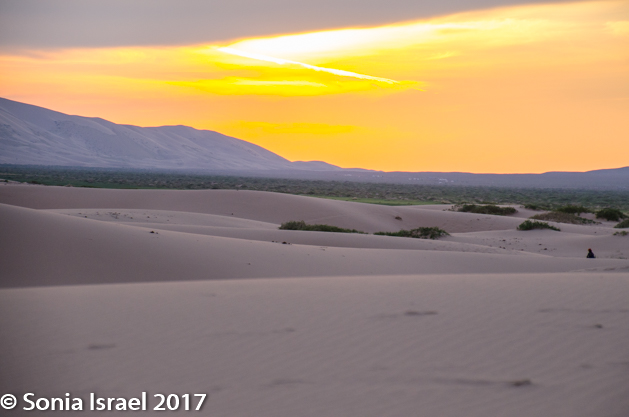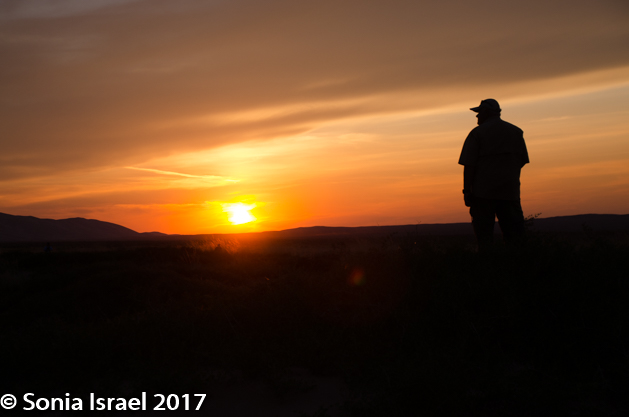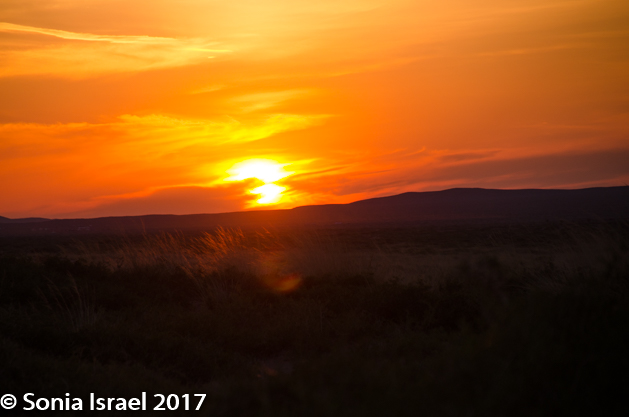National Geographic Trip to Mongolia, Day 7, June 17, 2017
Khongoryn Els sand dunes and camels and sunset
This morning, after breakfast, we grabbed a small bag for one night at the Khongoryn Els sand dunes. It was about a three hour drive, so our caravan set off again, across the desert. At one point the caravan stopped and we stepped out to admire the shapes made by the mountains and the dirt and the patches of green. Whenever you see a patch of green in the desert, you know that is where there is water, the source of life.
We also made a pit stop here. The men went off into the desert in one direction and the women in the other, looking for a bush to hide behind. And we could see gers in the distance, with their herds of sheep and goats making their way up the mountain.
After about another 1.5 hours we arrived at the Gobi Erdene, the only ger camp near the sand dunes and the place everyone stays. This was certainly one of the most simple ger camps we saw. The gers were still lined up in rows, but the doors were not painted and the inside had just one bed. That’s it. A bed. There were still solar panels between the gers and the one lonely lightbulb which did not work at night as the electricity was shut off. The bathrooms and showers were again in a communal house. And the food was very simple. But it was only for one night, and it was worth it to see the Khongoryn Els, some of the largest and most spectacular sand dunes in Mongolia. These sand dunes are also called the Singing Dunes (Duut Mankhan) because when the wind blows or collapses in small avalanches, it sounds like the dunes are singing.
And then there was the lone basketball hoop.
We dropped off our luggage, and headed to the dining hall which had a terrace above it. We pulled up some chairs and some beers and just enjoyed looking at the dunes in the distance. But we were also itching to get over there, to feel the sand and of course to photograph it.
The ride over there was over bushes and moguls and through a river. As we got closer and closer to the dunes, the vegetation began to change, becoming more dense rather than less, but now growing out of real sand and not the semi-desert we had seen so far.
But before we could plant our feet on the sand dunes, we got to ride Bactrian camels. At the foot of the sand dunes lives a nomad family that owns hundreds of camels and they rent them out to tourists like us. Now, Andy and I rode camels in Egypt, around the pyramids. And we rode camels up and down the sand dunes in Morocco. But here, we rode the camels for about 15 minutes away from the nomad’s ger, and 15 minutes back. It felt like a Disneyland ride. We broke into two groups, and while one rode the other visited the family. And then we switched. And while we did all this, our drivers used the time to take naps.
The family, like all nomads as far as I can tell, were very generous. We were offered us some aaruul, (remember, this is a Mongolian delicacy made of curdled milk that is dehydrated and thoroughly dried in the air and sun). The grandmother sat and talked with us (via Azaa translating) about the nomadic life. Much of their income comes from their camels, but of course they have sheep and goats and horses as well. Two of her grandchildren were there and we gave them some gifts, but they mostly wanted to run outside, ride their bikes and play as all little children would do. Her son was a former wrestling champion and his medal hung in the ger. And the TV of course was on the entire time.
That evening we came back to photograph the sunset on the dunes. Azaa and Andy and I took off our shoes and started climbing. The sand was like silk between our toes. And it was hard which made it easier to climb. Until we got close to the top at which point the sand became soft and slippery and stopped me in my tracks. Azaa managed to climb almost to the top. And the top is high. The sand dunes are up to 984 feet high, 7.5 miles wide and 62 miles long.
And the shapes and the colors – oh my. The dunes have curves which end in a sharp edge, making them look like ocean waves. Or in this case, a ying yang. And as the sun set, the colors changed from white to pink to orange. It was breathtakingly beautiful. We stood there a long time watching the colors. Watching the shapes change. Playing with our shadows. Until it was getting hard to see and we had to head back.
